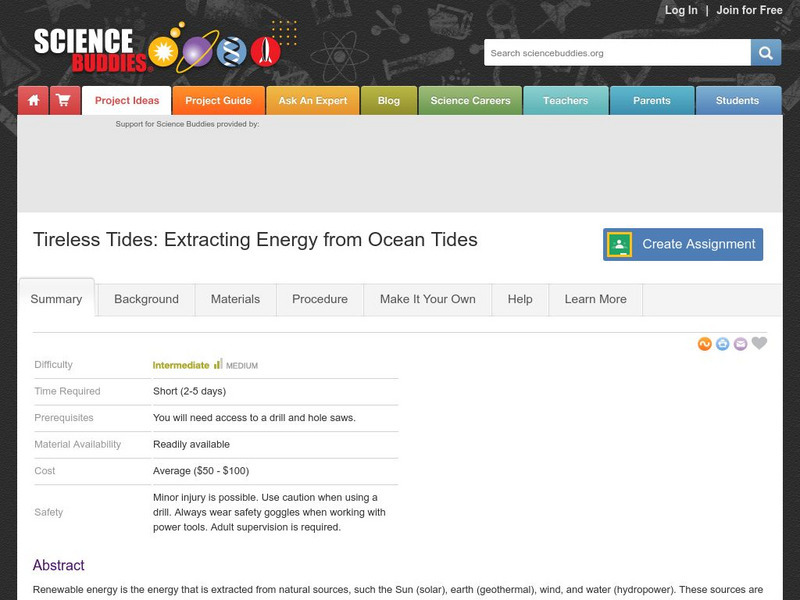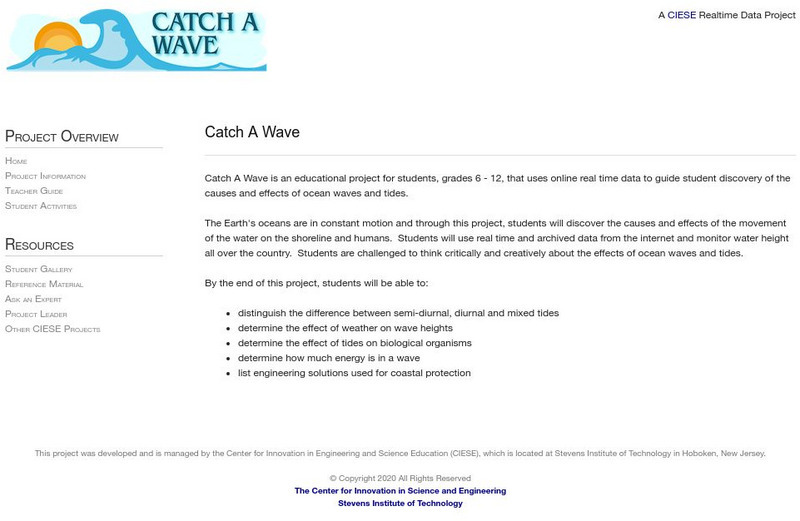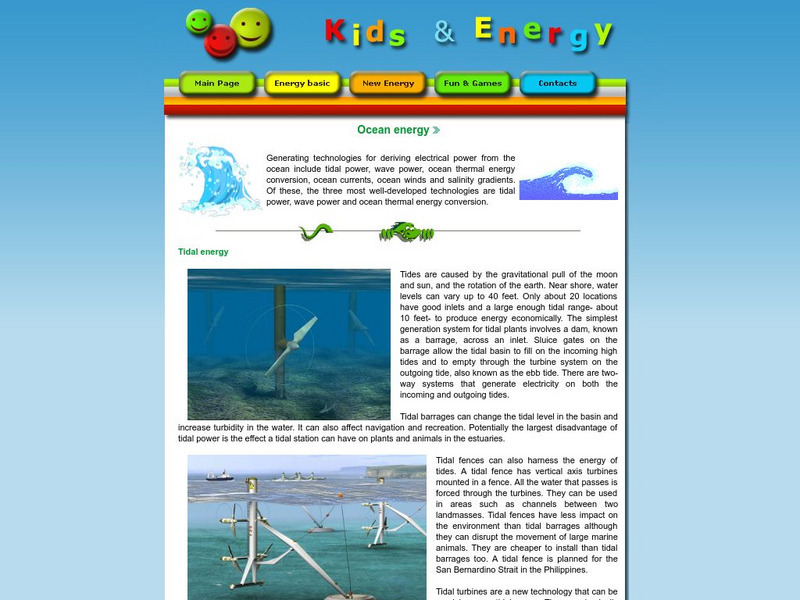Hi, what do you want to do?
Other
Texas Comptroller of Public Accounts: The Energy Report: Ocean Power [Pdf]
Chapter 20 of a report on the energy industry in Texas. It looks at power generated from the ocean, its history, and uses. This is a source that has been minimally developed in Texas and is unlikely to develop in the near future. It...
Science Buddies
Science Buddies: Tireless Tides: Extracting Energy From Ocean Tides
Renewable energy is the energy that is extracted from natural sources, such the Sun (solar), earth (geothermal), wind, and water (hydropower). These sources are renewable because they can be replenished by the same natural sources within...
Center for Innovation in Engineering and Science Education, Stevens Institute of Technology
Ciese: Catch a Wave
In this project for Grades 6 to 12, students will use real data collected online to learn how waves and tides work. They will learn what causes water to move, and how waves and tides impact on humans, organisms and waterfront lands. They...
Energy for Sustainable Development
Kids and Energy: Ocean Energy
Generating technologies for deriving electrical power from the ocean include tidal power, wave power, ocean thermal energy conversion, ocean currents, ocean winds and salinity gradients. Of these, the three most well-developed...
US Navy
Habitats: Beaches Characteristics
This resource presents an overview of beach structure. This article briefly covers beach features such as spits, tombolos and barrier islands.





![Texas Comptroller of Public Accounts: The Energy Report: Ocean Power [Pdf] eBook Texas Comptroller of Public Accounts: The Energy Report: Ocean Power [Pdf] eBook](https://static.lp.lexp.cloud/images/attachment_defaults/resource/large/FPO-knovation.png)


